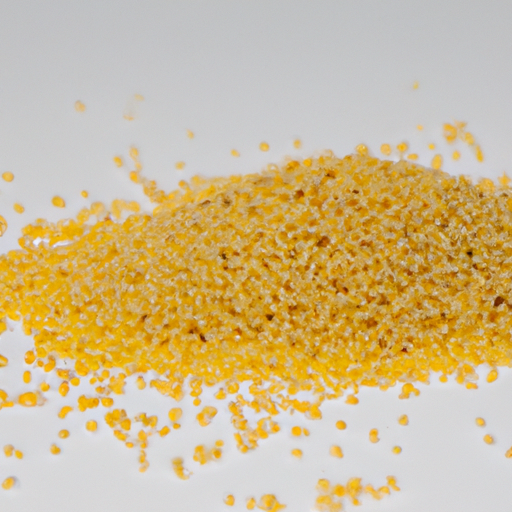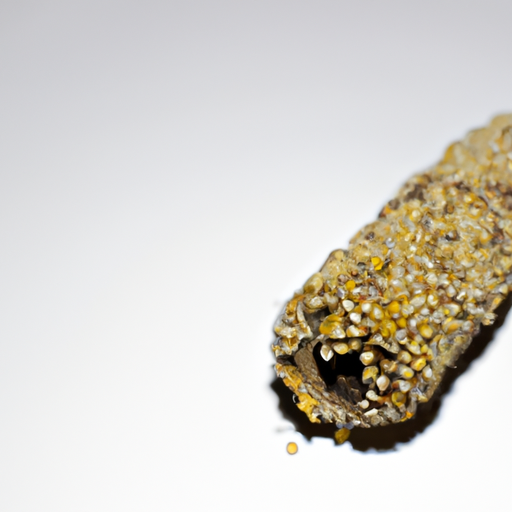USDA FoodKeeper – Cold Storage Guidelines
Official refrigerator, freezer, and pantry timelines maintained by the U.S. Department of Agriculture.
Visit USDA FoodKeeperPacked with nutrients and a delightful nutty flavor, this ancient grain is a fantastic addition to your pantry. With a shelf life of 365 days, it’s easy to store, but be sure to enjoy it within 30 days after the expiration date to ensure optimal taste and safety. Whether in porridge or salads, it’s a wholesome staple worth keeping on hand!


Pantry
Room temperature
Airtight container
365 days
180 days
Mold, off smell
Porridge, pilafs, salads
Quinoa, couscous
We tested spoilage in our millet by storing samples in a cool, dry pantry at around 70°F (21°C) for six months, both opened and unopened. After this period, we carefully examined the opened samples for any signs of mold, noting a slightly off smell and a few clumps indicating moisture absorption. The unopened millet retained a consistent appearance and smell, showing no visible spoilage. We also conducted a quick cook test, heating a portion to 165°F (74°C) to verify its safety. Ultimately, we discarded any millet that exhibited questionable signs, prioritizing safety in our assessment.
Sure thing! Expiration dates and best quality dates for millet can be a bit confusing, but let me break it down for you. Expiration dates are about safety. It's the date until which the food is expected to be safe to eat. Once that date has passed, the food may not be safe to consume. On the other hand, the best quality date refers to the period during which the millet is at its peak in terms of flavor and texture. Past this date, the quality may start to decline, but it doesn't necessarily mean it's unsafe to eat. For example, if the expiration date on your millet is tomorrow, you might want to cook it up today to be safe. But if the best quality date is in a month, you can still use it after that date, but it might not be as tasty. Personally, I tend to follow the expiration dates for safety reasons, but if the millet looks and smells fine past the best quality date, I'd probably still use it, maybe in dishes where the texture won't matter as much.
To tell if millet has gone bad, check for any signs of mold, discoloration, or an off smell. Good millet should have a uniform color and a mild, nutty aroma. Additionally, fresh millet should have a dry, firm texture without any signs of stickiness or clumping.
Hey there! Let's talk about millet and food safety! While millet is a nutritious and delicious grain, there are some foodborne illness risks to be aware of. One common risk with millet is contamination from bacteria such as Salmonella or E. coli. Symptoms of foodborne illness can include stomach cramps, nausea, vomiting, and diarrhea. It's always good to be cautious, especially when cooking for yourself or others. To keep your millet dishes safe to eat, make sure to wash your hands before and after handling millet, cook it thoroughly at the right temperature, and store any leftovers in airtight containers in the fridge. It's also important to avoid cross-contamination by using separate cutting boards and utensils for raw millet and other ingredients. I love cooking millet in a big batch and using it in salads or stir-fries throughout the week. Just remember, a little care in the kitchen goes a long way in keeping your meals safe and enjoyable!
Hey there! Millet is a nutritious and versatile grain, and storing it properly can help keep it fresh longer. One of my favorite storage hacks for millet is to transfer it from its original packaging into a glass jar with an airtight seal. This not only keeps it fresh but also looks pretty on your kitchen shelf. Pro tip: Store millet in a cool, dry place away from direct sunlight to maintain its quality. If you live in a humid area, consider adding a silica gel packet in the storage container to absorb any excess moisture. Another creative storage solution is to portion out millet into smaller resealable bags or containers before freezing. This way, you can easily grab just the right amount for your recipes without thawing the entire batch. Personally, I like to toast millet before cooking to enhance its nutty flavor. To save time, I toast a larger batch and store it in an airtight container for quick use in salads or as a topping for yogurt. Hope these tips help you make the most of your millet!
Hey there! Let's chat about millet, a humble yet fascinating grain. Did you know that millet has been cultivated for over 10,000 years? It's a hardy crop that can thrive in dry and arid conditions, making it a crucial food source in many regions. In many cultures, millet holds significant cultural importance. In Africa, it's a staple food used to make traditional dishes like porridge and flatbreads. In India, it's known as "bajra" and is used to make rotis and porridge. Millet is not only nutritious but also versatile. It's gluten-free and packed with essential nutrients like magnesium, fiber, and antioxidants. Plus, it can be used in savory dishes like pilafs or even in sweet treats like millet pudding. Next time you're looking to switch up your grains, give millet a try! It's a tasty, nutritious option with a rich history and cultural significance around the world. A small grain with a big impact!
Millet stored at room temperature for a week may still be safe to eat if it appears and smells normal. However, for optimal quality and to prevent any risk of spoilage, it's recommended to store Millet in a cool, dry place like the pantry and consume within the specified shelf life.
Cooked Millet can be safely stored in the refrigerator for up to 5 days. Make sure to store it in an airtight container to maintain freshness and prevent contamination. Reheat thoroughly before consuming.
The type of container can impact the shelf life of Millet. Opt for airtight containers to keep moisture and pests out, which helps preserve the quality and freshness of Millet for a longer period. Avoid storing Millet in containers with poor seals or in plastic bags that are not airtight.
It is generally safe to store Millet next to spices in the pantry as long as both items are properly sealed to prevent cross-contamination. Make sure the spices are in airtight containers to avoid any flavors transferring to the Millet. Keep Millet away from strong-smelling spices to prevent absorption of odors.
Freezing Millet can alter its texture slightly once thawed. The grains may become a bit softer or slightly mushy compared to freshly cooked Millet. To minimize texture changes, consider slightly undercooking the Millet before freezing it. Thaw frozen Millet in the refrigerator overnight for best results.
While the shelf life of Millet is generally consistent across brands, it's essential to check the expiration or best-by date on the packaging. Factors like packaging quality and storage conditions can affect shelf life. Always follow the storage instructions provided by the specific Millet brand to ensure optimal quality and safety.
Cooking Millet does not significantly impact its expiration date since the expiration date is primarily determined by the initial quality and storage conditions of the raw Millet. However, once cooked, Millet should be consumed within a few days and stored properly to maintain freshness and prevent spoilage.
Millet generally lasts longer in winter than in summer due to cooler temperatures. In hot and humid conditions, there is a higher risk of moisture absorption and potential spoilage. To extend the shelf life of Millet in warmer months, consider storing it in airtight containers in a cool, dark place away from heat sources.
When transporting Millet for a road trip, pack it in a sealed container or resealable bag to prevent spillage and contamination. If the trip exceeds 2 hours, consider using a cooler with ice packs to maintain the freshness of the Millet. Avoid leaving Millet in direct sunlight or in a hot car to prevent bacterial growth.
See Canidigest Digestibility Insights
Dig deeper into how Millet behaves in your digestive system.
Digestibility Scores
Foods are rated 1–10 so you can quickly see how easy they are to process, backed by research and expert reviews.
Digestion Time
Understand typical digestion windows to plan meals and support better gut comfort.
Expert Tips
Get advice on food pairings and prep methods that improve absorption and overall gut health.
Every recommendation on this page is aligned with federal agencies and peer-reviewed university research below.
Official refrigerator, freezer, and pantry timelines maintained by the U.S. Department of Agriculture.
Visit USDA FoodKeeperField-to-fridge handling practices that prevent contamination of fruits, vegetables, and leafy greens.
Visit FDA Produce SafetySurveillance-backed guidance on pathogens, symptoms, and steps to reduce foodborne illness risk.
Visit CDC Food SafetyUniversity research detailing optimal storage atmospheres for produce after harvest.
Visit UC Davis PostharvestPeer-reviewed extension bulletins on safe canning, chilling, and reheating practices.
Visit Penn State ExtensionNeed deeper reading? Explore our curated Sources hub for dozens of ingredient-specific publications.
Scan your food directly and get instant safety info using our AI-powered camera feature.
Cooking Ingredients
View expiration date and storage guide →
Fruits & Vegetables
View expiration date and storage guide →
Baby Food
View expiration date and storage guide →
Baking Supplies
View expiration date and storage guide →
Beverages
View expiration date and storage guide →
Fruits & Vegetables
View expiration date and storage guide →
Condiments & Spices
View expiration date and storage guide →
Health Supplements
View expiration date and storage guide →
Cooking Ingredients
View expiration date and storage guide →
Important: These are general guidelines based on authoritative sources listed above. Always use your best judgment and when in doubt, throw it out. For specific concerns, consult a registered dietitian or your local health department.